Related Research Articles

Liberal arts education is the traditional academic course in Western higher education. Liberal arts takes the term art in the sense of a learned skill rather than specifically the fine arts. Liberal arts education can refer to studies in a liberal arts degree course or to a university education more generally. Such a course of study contrasts with those that are principally vocational, professional, or technical, as well as religiously based courses.

The Phi Beta Kappa Society (ΦΒΚ) is the oldest academic honor society in the United States, and among the most prestigious, due in part to its long history and academic selectivity. Phi Beta Kappa aims to promote and advocate excellence in the liberal arts and sciences, and to induct the most outstanding students of arts and sciences at only select American colleges and universities. It was founded at the College of William and Mary on December 5, 1776, as the first collegiate Greek-letter fraternity and was among the earliest collegiate fraternal societies. Since its inception, 17 U.S. presidents, 40 U.S. Supreme Court justices, and 136 Nobel laureates have been inducted as members.
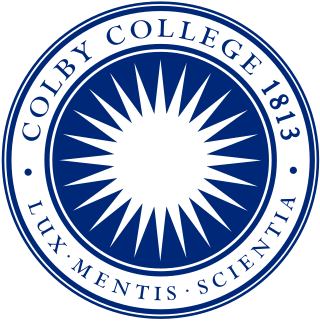
Colby College is a private liberal arts college in Waterville, Maine. Founded in 1813 as the Maine Literary and Theological Institution, it was renamed Waterville College in 1821. The donations of Christian philanthropist Gardner Colby saw the institution renamed again to Colby University before settling on its current title, reflecting its liberal arts college curriculum, in 1899. Approximately 2,000 students from more than 60 countries are enrolled annually. The college offers 54 major fields of study and 30 minors.
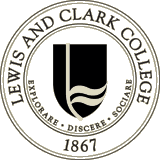
Lewis & Clark College is a private liberal arts college in Portland, Oregon. Originally chartered in 1867 as the Albany Collegiate Institute in Albany, Oregon, the college was relocated to Portland in 1938 and in 1942 adopted the name Lewis & Clark College after the Lewis and Clark Expedition. It has three campuses: an undergraduate College of Arts and Sciences, a School of Law, and a Graduate School of Education and Counseling.

The State University of New York at New Paltz is a public university in New Paltz, New York. It traces its origins to the New Paltz Classical School, a secondary institution founded in 1828 and reorganized as an academy in 1833.

Aida Turturro ( ) is an American actress. She is best known for her portrayal of Janice Soprano on the HBO drama series The Sopranos.
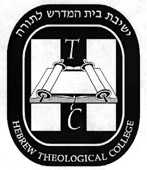
The Hebrew Theological College, known colloquially as "Skokie Yeshiva" or HTC, is a yeshiva in Skokie, Illinois. Although the school's primary focus is the teaching of Torah and Jewish tradition, it is also a private university that is part of the Touro University System which hosts separate programs for men and women. Founded as a Modern Orthodox institution, it has evolved to include students from Haredi and Hasidic backgrounds.
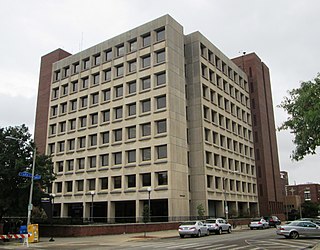
The College of Liberal Arts and Sciences (LAS) is the largest college of the University of Illinois Urbana-Champaign. The college was established in 1913 through the merger of the College of Literature and Arts and the College of Science. The college offers seventy undergraduate majors, as well as master's and Ph.D. programs. As of 2020, there are nearly 12,000 undergraduate students and 2,500 graduate students attending the College of Liberal Arts and Sciences.
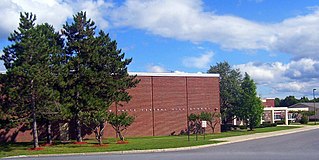
New Paltz Central High School is situated in the town of New Paltz in New York, on South Putt Corners Road. It serves students in grades 9-12 from the New Paltz Central School District, which serves most of New Paltz and Gardiner, New York, as well as parts of several other towns adjacent.
The history of New York University begins in the early 19th century. A group of prominent New York City residents from the city's landed class of merchants, bankers, and traders established NYU on April 18, 1831. These New Yorkers believed the city needed a university designed for young men who would be admitted based on merit, not birthright or social class. Albert Gallatin, one of the founders of the university, described his motivation in a letter to a friend: "It appeared to me impossible to preserve our democratic institutions and the right of universal suffrage unless we could raise the standard of general education and the mind of the laboring classes nearer to a level with those born under more favorable circumstances." For the school's founders, the classical curriculum offered at American colonial colleges needed to be combined with a more modern and practical education. Educators in Paris, Vienna, and London were beginning to consider a new form of higher learning, where students began to focus not only on the classics and religion, but also modern languages, philosophy, history, political economy, mathematics, and physical science; so students might become merchants, bankers, lawyers, physicians, architects, and engineers. Although the new school would be non-denominational – unlike many American colonial colleges, which at the time offered classical educations centered on theology – the founding of NYU was also a reaction by evangelical Presbyterians to what they perceived as the Episcopalianism of Columbia College.

Liberal arts colleges in the United States are undergraduate institutions of higher education in the United States that focus on a liberal arts education. The Encyclopædia Britannica Concise defines liberal arts as a "college or university curriculum aimed at imparting general knowledge and developing general intellectual capacities, in contrast to a professional, vocational, or technical curriculum". Generally, a full-time, four-year course of study at a liberal arts college leads students to earning the Bachelor of Arts or the Bachelor of Science.

Henan Normal University, colloquially known as 河师大, is a public normal university located in the northern part of Xinxiang, Henan, China. In 2022, Henan Normal University ranked the 3rd in Henan province and top 150 in China. Henan Normal University owns one of the largest education institution in China. In addition to the university, it contains attached kindergartners, one primary school and one National Key Middle-high school.
The University of Iowa College of Liberal Arts and Sciences (CLAS) is the largest of the eleven colleges at The University of Iowa, founded in 1900. In 2007-2008, there was a total of 16,417 undergraduates enrolled in CLAS, 81% of all undergraduates at the university, and about 2,400 graduate students. The largest undergraduate majors are: Psychology, English, Biology, Communication Studies, Interdepartmental Studies, Political Science, School of Art and Art History, History, International Studies, and Journalism. The College is housed in Schaeffer Hall, part of the historic Pentacrest on the university's Iowa City campus.
The College of Liberal Arts and Human Sciences at Virginia Tech comprises two schools, 12 departments, and three ROTC programs. The college also has connections to research facilities and local community service organizations through which students can earn experience in major related fields and has many study abroad programs. In 2010–11, the college had 4,386 students taking courses on the Blacksburg campus. The college's dean, Rosemary Blieszner, was appointed in 2017.
Lauren Fensterstock is an American artist, writer, curator, critic, and educator living and working in Portland, Maine. Fensterstock’s work has been widely shown nationally at venues such as the John Michael Kohler Art Center (WI), the Bowdoin College Museum of Art (ME), the Portland Museum of Art (ME), and is held in public and private collections throughout the U.S, Europe, and Asia.
Jamie Bennett is an American artist and educator known for his enamel jewelry. Over his forty-year career, Bennett has experimented with the centuries-old process of enameling, discovered new techniques of setting, and created new colors of enamel and a matte surfaces. This has led him to be referred to as “one of the most innovative and accomplished enamellers of our time” by Ursula Ilse-Neuman, historian and former curator at the Museum of Art and Design in New York City. Bennett is closely associated with the State University of New York at New Paltz, where he studied himself as a student, and taught in the Metal department for many years. Bennett retired from teaching in 2014, after thirty years at SUNY New Paltz.
Myra Mimlitsch-Gray is an American metalsmith, artist, critic, and educator living and working in Stone Ridge, New York. Mimlitsch-Gray's work has been shown nationally at such venues as the John Michael Kohler Arts Center, Museum of the City of New York, Metropolitan Museum of Art, Cooper-Hewitt Smithsonian Design Museum, and Museum of Arts and Design. Her work has shown internationally at such venues as the Middlesbrough Institute of Modern Art, Stadtisches Museum Gottingen, and the Victoria and Albert Museum, and is held in public and private collections in the U.S, Europe, and Asia.

Abshalom Jac Lahav is a New York City–based artist. He is known for his series 48 Jews and The Great Americans which have been shown at museums such as Richmond Art Museum, Samuel Dorsky Museum of Art, The Oregon Jewish Museum and Jewish Museum of Florida. His painting style implements well known images of famous people in the modern contexts, but still references historical modes of painting and black-and-white photography through its use of monotone imagery. He is also the founder of the Midnight Society, an artist run curatorial project based in Brooklyn, New York.
Hermann Traugott Louis Fuechsel, also known as Füchsel or Fuchsel, was a German-American landscape painter, and member of the Düsseldorf school and Hudson River School.
References
- ↑ https://www.newpaltz.edu/ugc/las/jewish_stud/
- ↑ "College of Liberal Arts & Sciences." SUNY New Paltz – College of Liberal Arts & Sciences, http://www.newpaltz.edu/collegelas/deptprogs.html.
- ↑ https://www.thejcnp.org/
- 1 2 3 Strongin, William, "Contemplating the Nature of Evil", Reconstructionism Today, Vol. 6, No. 3, p. 9